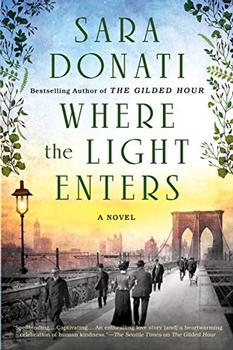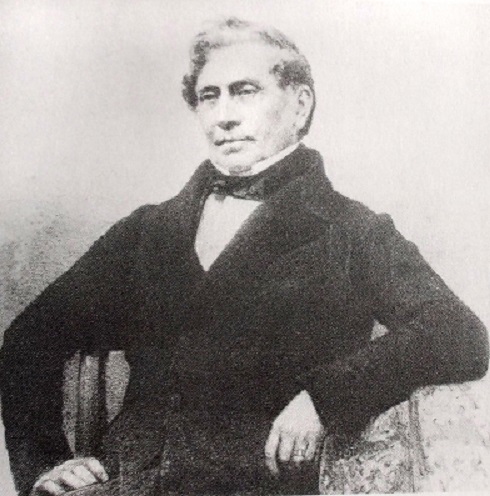Summary | Excerpt | Reading Guide | Discuss | Reviews | Beyond the Book | Read-Alikes | Genres & Themes | Author Bio

Critics' Opinion:
Readers' Opinion:
First Published:
Sep 2019, 672 pages
Paperback:
Aug 2020, 672 pages
 Book Reviewed by:
Book Reviewed by:
Tara Mcnabb
Buy This Book
This article relates to Where the Light Enters
The 19th century was a time of revolutionary changes in the areas of industrialism, democracy and the sciences, yet despite these radical shifts in society, the general public still viewed women as inherently less intelligent and less capable than men. Revered 19th century German philosopher Friedrich Nietzsche remarked, "When a woman has scholarly inclinations there is usually something wrong with her sexual organs." Given this backdrop of sexist thinking, it's not surprising that many women had to fight to prove themselves worthy of professional titles. Perhaps one of the most notoriously difficult career choices a woman could make at that time was to pursue her dream of becoming a doctor. Women had long been considered "morally unfit" to work in the medical field, but there were women that defied that assertion, and with great aplomb.
 Margaret Ann Bulkley was born in Ireland in the late 18th century. Her desire to work in medicine led her to disguise herself as a man in order to attend medical school at the prestigious Edinburgh University. She passed as male among the faculty and her classmates, and graduated in 1812 as Dr. James Barry. Often referred to as the "beardless lad," she went on to work as a British army surgeon for over 40 years. Her work took her across the British Empire to such exotic places as Malta, Jamaica, Cape Town and the Leeward Islands. During that time, her secret remained mostly undetected. There were those who had suspicions, but for various reasons never pursued them to find out for sure if the impressive Dr. Barry was indeed a woman. This may be because of her reputation for having a fierce temper; an officer once voiced his observation that Dr. Barry looked like a woman, and she responded by slashing him across the face with a horse whip. Or maybe it was the disguise itself that worked so well; it consisted of a bulky man's overcoat called a "surtout," in which she had sewn extra cushioning in order to appear larger in size. Whatever the reasons, Dr. Barry was known as a revered and skilled surgeon and one of the Empire's most loyal servants. Given that Bulkley/Barry lived life as a man for 56 years, it has been widely speculated that she may have been a transgender man.
Margaret Ann Bulkley was born in Ireland in the late 18th century. Her desire to work in medicine led her to disguise herself as a man in order to attend medical school at the prestigious Edinburgh University. She passed as male among the faculty and her classmates, and graduated in 1812 as Dr. James Barry. Often referred to as the "beardless lad," she went on to work as a British army surgeon for over 40 years. Her work took her across the British Empire to such exotic places as Malta, Jamaica, Cape Town and the Leeward Islands. During that time, her secret remained mostly undetected. There were those who had suspicions, but for various reasons never pursued them to find out for sure if the impressive Dr. Barry was indeed a woman. This may be because of her reputation for having a fierce temper; an officer once voiced his observation that Dr. Barry looked like a woman, and she responded by slashing him across the face with a horse whip. Or maybe it was the disguise itself that worked so well; it consisted of a bulky man's overcoat called a "surtout," in which she had sewn extra cushioning in order to appear larger in size. Whatever the reasons, Dr. Barry was known as a revered and skilled surgeon and one of the Empire's most loyal servants. Given that Bulkley/Barry lived life as a man for 56 years, it has been widely speculated that she may have been a transgender man.
Across the pond, Rebecca Lee Crumpler made waves in America when she became the first Black woman to earn a medical degree in 1864. Born in Delaware, Crumpler first got her taste for medicine working as a nurse for eight years. In 1860, she began her studies at the New England Female Medical College in Massachusetts. When she earned her M.D. degree, she became the first African American woman to graduate from the college. After the Civil War, Crumpler moved to Richmond, Virginia, where she worked alongside other African American doctors to treat freed slaves. Although there are limited records of her work during this time, it is safe to say that she and her colleagues probably experienced fierce racism since they were working in the postwar South. Upon returning to Boston, she continued her medical practice with a focus on women and children. She expressed her enthusiasm frequently in her journal: "I returned to my former home, Boston, where I entered into the work with renewed vigor, practicing outside, and receiving children in the house for treatment; regardless, in a measure, of remuneration." In 1883, she published one of the first medical reports ever written by an African American, her Book of Medical Discourses. It was progressive for its time because of its focus on medical advice for women and children.
Like Dr. Sophie and Anna Savard in Where the Light Enters, women in the medical field have had to contend with both sexism and racism as they worked their way to the top of their professions. But it was their tenacity and courage that paved the way for generations of young female physicians who followed in their footsteps. As Elizabeth Blackwell, the first American woman to receive a medical degree (in 1849), once said, "None of us can know what we are capable of until we are tested."
Margaret Ann Bulkley as Dr. James Barry
Filed under People, Eras & Events
![]() This "beyond the book article" relates to Where the Light Enters. It originally ran in October 2019 and has been updated for the
August 2020 paperback edition.
Go to magazine.
This "beyond the book article" relates to Where the Light Enters. It originally ran in October 2019 and has been updated for the
August 2020 paperback edition.
Go to magazine.





The House on Biscayne Bay
by Chanel Cleeton
As death stalks a gothic mansion in Miami, the lives of two women intertwine as the past and present collide.

The Flower Sisters
by Michelle Collins Anderson
From the new Fannie Flagg of the Ozarks, a richly-woven story of family, forgiveness, and reinvention.

The Funeral Cryer by Wenyan Lu
Debut novelist Wenyan Lu brings us this witty yet profound story about one woman's midlife reawakening in contemporary rural China.
Your guide toexceptional books
BookBrowse seeks out and recommends the best in contemporary fiction and nonfiction—books that not only engage and entertain but also deepen our understanding of ourselves and the world around us.